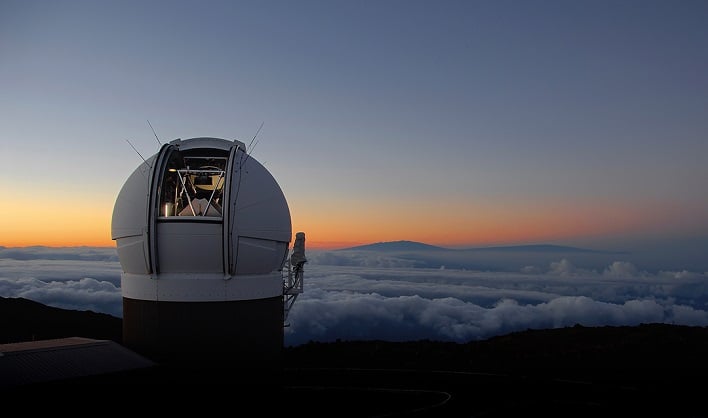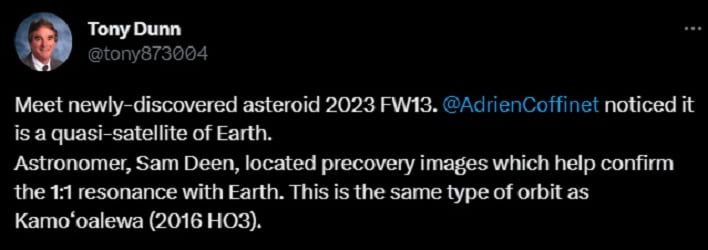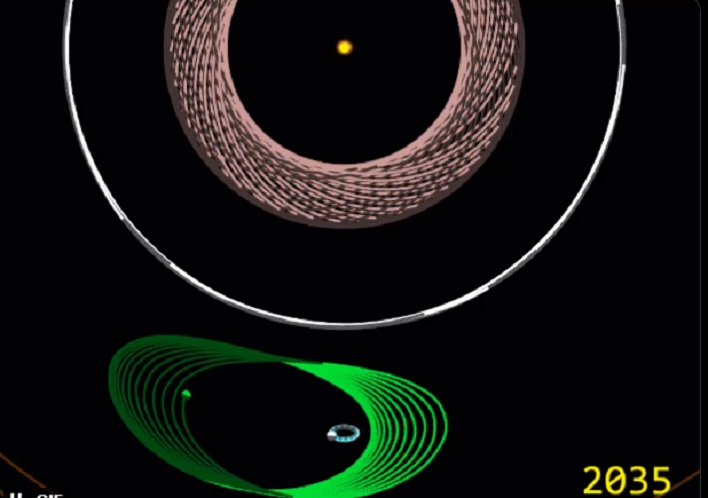Say Hello To Our Newly Discovered Quasi-Moon That's Been Orbiting Earth Since 100 BC

Asteroid 2023 FW13 was first discovered in March of this year and is believed to have been orbiting Earth since at least 100 B.C. Astronomers also believe that this quasi-moon could stay in orbit with Earth until at least A.D. 3700.
Astronomers discovered the asteroid while utilizing the Pan-STARRS survey telescope on the Hawaiian Island of Maui. The ground-based telescope is a 1.8-meter diameter telescope that is equipped with the world's largest digital camera, with nearly 1.4 billion pixels. Every night the telescope observes about 1,000 square degrees of the night sky, using a sequence of four exposures spanning about an hour. It is mostly funded by the NASA Near Earth Observation Program.
Shortly after the asteroid was discovered, the Canada-France-Hawaii Telescope in Hawaii and the Kitt Peak Observatory, and Mt. Lemmon Skycenter in Arizona also confirmed the finding, according to a report by Space.com. The asteroid then passed all the necessary checks and balances and was officially announced on April 1, 2023.
2023 FW13 is believed to be about 65 feet (20 meters) wide, with the Sun having a greater influence on its orbital path than that of Earth. This keeps the asteroid in a similar orbital path to Earth, much like another quasi-moon known as Kamo'oalewa (2016 HO3).
The space rock travels around the Sun in the same amount of time as Earth, with the closest pass of Earth being within 9 million miles. In comparison, the Moon seen in the night sky orbits Earth at around 223,693 miles at its closest point. This means astronomers are not concerned about 2023 FW13 colliding with Earth or causing other disturbances.
**Update 6/2/2023: Currently no images of 2023 FW13 have been shared with the public. If any images are found to have been posted in the near future, they will be added via an update to this article.



